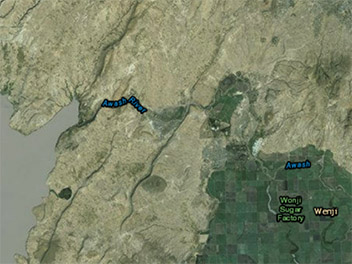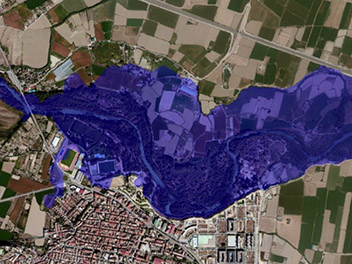 |
 |
 |
 |
notes from the field
These field notes are personal views and do not necessarily reflect the views of Red Cross/Red Crescent Climate Centre
Katie Chambers
Ethiopia
June - August, 2017
Engineering Meets Humanitarian Action: Project Background and Scope
June 3, 2017
View photo gallery for more photos from the field by Katie Chambers
|
The sound of distant thunder echoes through my fifth-floor office in Ethiopia’s capital, Addis Ababa, and the city traffic has come to a standstill as rain saturates the ground below. The rainy season has just started in Ethiopia and will continue until August. Locals warn me to expect rain every day, but that “it is nothing compared to the rain in the United States”. With the rainy season comes hope of a break from the drought that has affected much of East Africa, but also the potential of floods impacting vulnerable communities. My project as an intern with the Red Cross Red Crescent Climate Centre this summer aims to address issues surrounding flooding and consists of two main objectives, to (1) develop inundation models to determine the extent of flooding on downstream communities and (2) develop a forecast-based contingency plan for the Red Cross to link the level of risk with the actions needed to protect communities from floods.
|
The project specifically looks at the Awash River and flooding downstream of Koka Dam, Ethiopia’s oldest hydroelectric dam, with the potential to expand the project to an additional dam currently in construction.
The first phase of the project consists of flood inundation mapping using HEC-GeoRAS, a software that combines HEC-RAS (a program that models water flow through natural and man-made channels) and ArcGIS (a program for the management, analysis, and display of geographic information).
|
The results are produced in a geospatial context, which allows users to determine the extent of flooding and predicted impacts to downstream communities. Controlled water releases from Koka Dam and precipitation during rainfall events both contribute to the water flow in the Awash River. Contribution of the dam release and the heavy predication to flooding need to be clarified. These different contributing factors have led to the proposal of three flood modeling scenarios for the Awash River: (1) water release exclusively from Koka Dam, (2) water exclusively from rainfall, and (3) both water release from Koka Dam and rainfall.
For the second phase of the project, I will produce an Early Warning Early Action (EW/EA) framework for the Red Cross with the goal of planning humanitarian action before a disaster happens using available scientific information. The inundation maps developed in the first phase will guide the framework, as different responses are required for different controlled release and precipitation events. The bulk of my fieldwork will occur is this phase, as community participation is crucial to the success of any EW/EA framework. Through my fieldwork, I hope to identify feasible methods of warning communities of impending flood events and develop recommend actions to take to protect lives and livelihoods. Of all the exciting things happening surrounding the project, I am probably most looking forward to the fieldwork portion of the project.
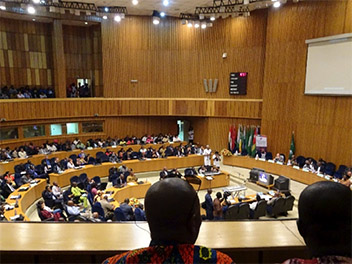 Africa Day celebrations at the African Union Headquarters |
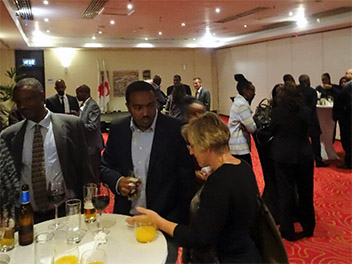 Reception for visiting IFRC Africa Region Leadership Team |
My time thus far in Addis Ababa has been both exciting and challenging, with plenty of coffee and Ethiopian food to fuel my work. Aside from office work, I have had the opportunity to attend Africa Day celebrations at the African Union Headquarters and a reception with the visiting IFRC Africa Region Leadership Team. I am excited to see the direction the project goes, and even more excited to get into the field in the coming weeks.
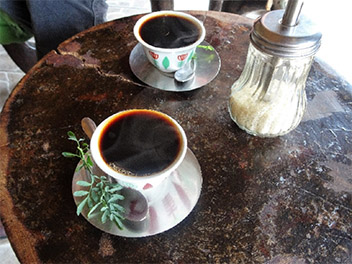 Plenty of coffee and Ethiopian food to fuel my work! |
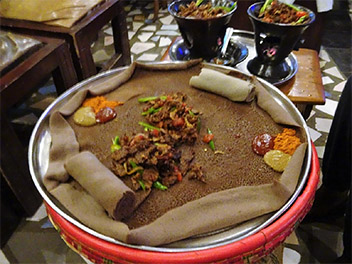 |



